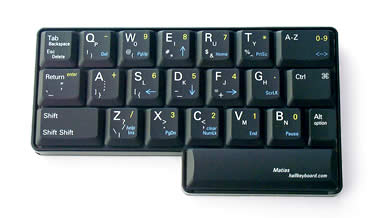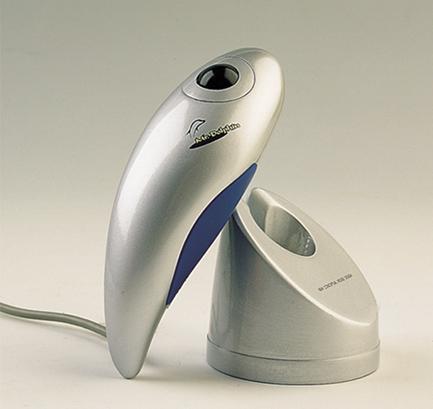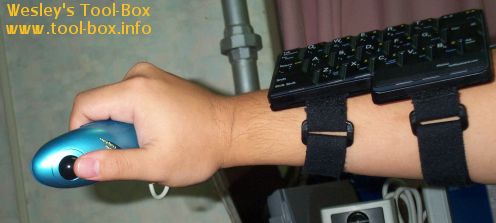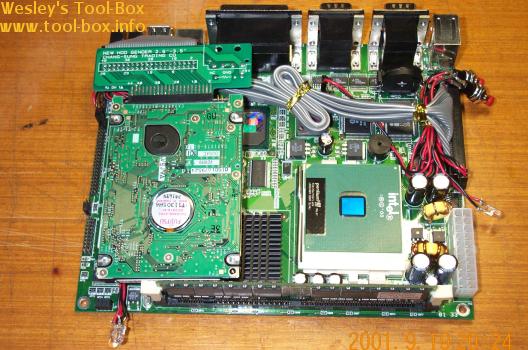Wearable Computing Project (4/10)
Posted by Wesley onWhen the computer is being used while being 'worn', the input devices must be on the user's body in some fashion, as they would not have a solid surface to be placed on like the traditional keyboard and mouse. This departure from the conventional placement of input devices had been immediately on my mind after the motherboard was chosen. Using a mini-keyboard similar to what I have on my portable Athlon deemed too bulky, despite its relative smallness. Those flexible rubber keyboards that you could fold around came up next, but I found the keys very uncomfortable to type, especially while being attached to my body. So I did a search for mobile input devices, and I came across HalfKeyboard from Matias Corporation.

It had only half the keys of a traditional keyboard, but because of its unique design, it enables the user to type any key present on a normal keyboard with only one hand. I found this product to be a perfect thing for my project, and despite the hefty price tag of $300, I immediately ordered a wearable version.
Then I needed a pointing device. I vaguely remembered a certain mouse that you could put on a finger to control the cursor, but I couldn't remember its exact name or form, so I gave up and I tried to look for a similar device. Interestingly, Logitech had the solution, with their TrackMan Live! presentation trackball which could be held in one hand to control cursor movements. But the local distributor no longer imported this product due to the extreme unpopularity. I thought I hit a wall at this point, but searching various shopping sites revealed a handheld trackball called 'Little Dolphin' from J&J Magnetic. This one was small enough to be easily fit in one hand (TM Live! seemed tad big for my small Asian hand), and only cost about $12. This was a fine pointing device of choice in a mobile situation, I thought.

I had to wait about a week for the HalfKeyboard to arrive from Canada so I could try on the actual functionality of these devices. The package eventually arrived, and I immediately put them on. It took a bit of time to get used to, but I found my choices of devices to be quite satisfactory for its intended purposes.

As you can see, both devices could be worn on one arm, leaving the other arm free for other attachments. I just had to make sure the 'other attachment' did not conflict with the use of the left hand for using the keyboard. Functionality of the input devices being confirmed, I attached a 2.5", 20GB(Model MHN2100AT) Fujitsu hard disk, which would function as the main data storage on the motherboard so I could install an OS (certainly not Windows CE, mind you).

Notice the IDE cable needed to be shortened a bit to save room. I took care of this part later by buying a custom-ordered IDE cable with proper length. Also, you can see some LED's sticking out at the bottom of the hard disk. These are LAN signal lights. I later removed these mainly because it seemed rather unnecessary. The other LED, to the right of the CPU is the HDD access light, and remained at its place. It was a high-intensity blue LED from Toyoda-Gosei. The buttons at the top right are Power and Reset switches, naturally.